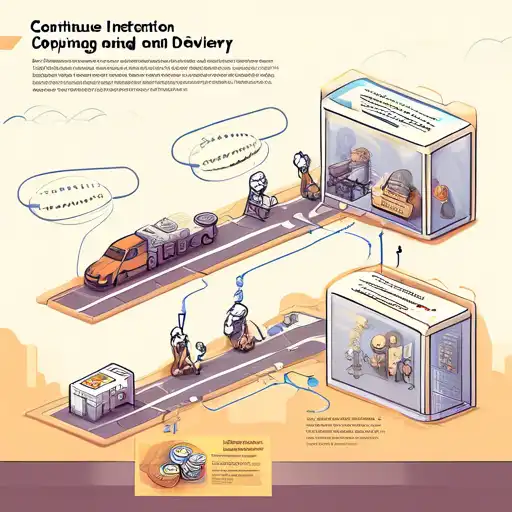What is Continuous Integration and Delivery?
Continuous Integration (CI) and Continuous Delivery (CD) are pivotal practices in modern software development, aimed at improving software quality and speeding up the release process. CI/CD automates the integration of code changes from multiple contributors into a single software project, ensuring that the software can be reliably released at any time.
The Benefits of CI/CD
Implementing CI/CD brings numerous benefits to development teams, including:
- Reduced integration problems
- Faster release rates
- Higher quality software
- Improved developer productivity
By automating the build, test, and deployment processes, teams can focus more on development and less on the logistics of software release.
How CI/CD Works
CI/CD pipelines are the backbone of these practices. A typical pipeline includes several stages:
- Code commit: Developers push changes to a shared repository.
- Automated build: The system compiles the code into executable artifacts.
- Automated testing: Various tests (unit, integration, etc.) are run to ensure code quality.
- Deployment: The code is deployed to production or staging environments.
This automation ensures that every change is verified, reducing the risk of errors in production.
Best Practices for CI/CD
To maximize the effectiveness of CI/CD, consider the following best practices:
- Maintain a single source repository
- Automate the build process
- Make your build self-testing
- Every commit should build on an integration machine
- Keep the build fast
- Test in a clone of the production environment
- Make it easy to get the latest deliverables
- Everyone can see the results of the latest build
Adhering to these practices ensures a smooth and efficient CI/CD pipeline.
Challenges in Implementing CI/CD
While CI/CD offers many advantages, teams may face challenges such as:
- Initial setup complexity
- Cultural resistance to change
- Integration with legacy systems
Overcoming these challenges requires commitment from all team members and a willingness to adapt to new workflows.
Conclusion
Continuous Integration and Delivery are essential practices for teams aiming to deliver high-quality software rapidly and reliably. By automating the integration and delivery processes, teams can reduce errors, improve efficiency, and focus on creating value for their users. For more insights into DevOps practices, explore our latest trends in DevOps.
